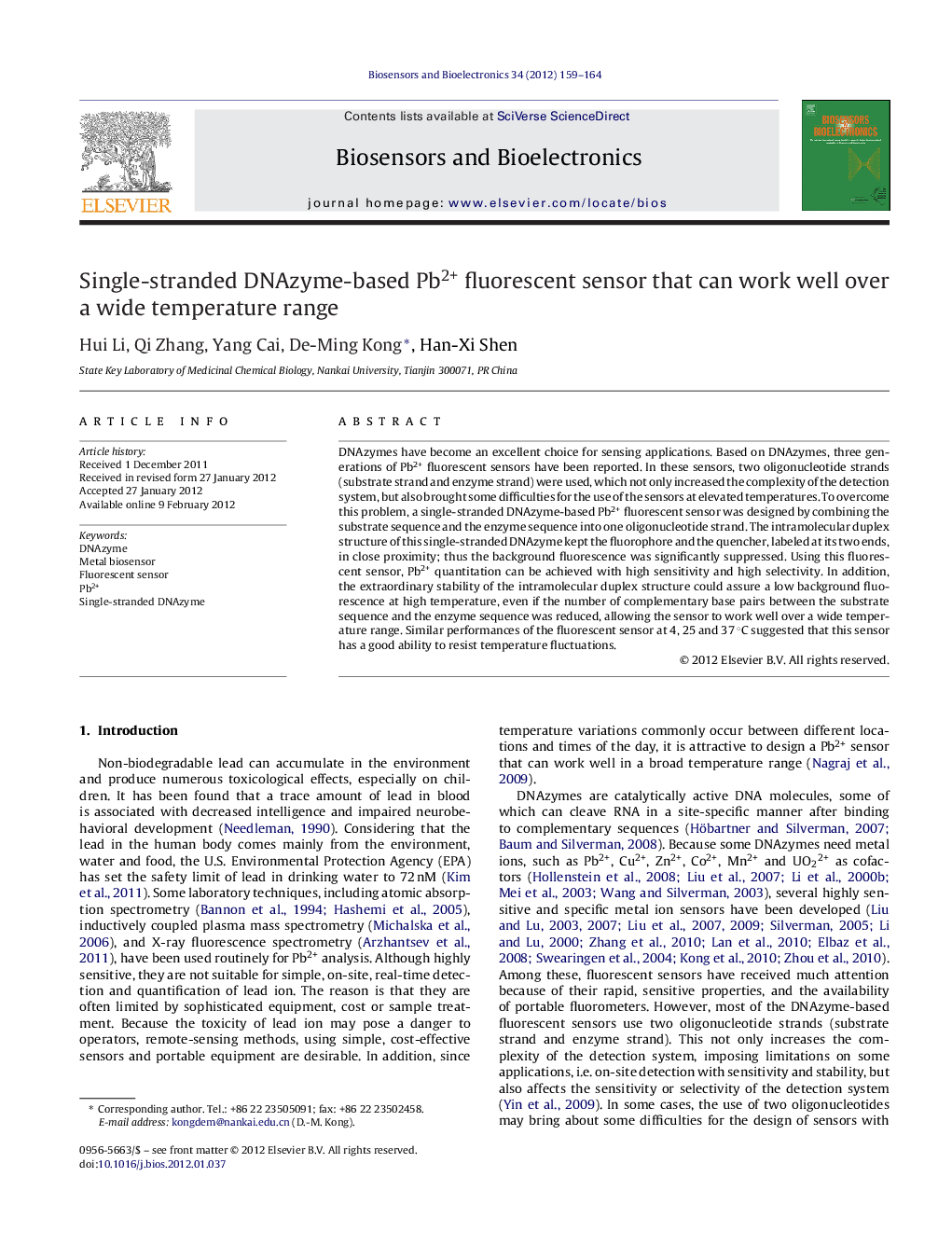| Article ID | Journal | Published Year | Pages | File Type |
|---|---|---|---|---|
| 867458 | Biosensors and Bioelectronics | 2012 | 6 Pages |
DNAzymes have become an excellent choice for sensing applications. Based on DNAzymes, three generations of Pb2+ fluorescent sensors have been reported. In these sensors, two oligonucleotide strands (substrate strand and enzyme strand) were used, which not only increased the complexity of the detection system, but also brought some difficulties for the use of the sensors at elevated temperatures. To overcome this problem, a single-stranded DNAzyme-based Pb2+ fluorescent sensor was designed by combining the substrate sequence and the enzyme sequence into one oligonucleotide strand. The intramolecular duplex structure of this single-stranded DNAzyme kept the fluorophore and the quencher, labeled at its two ends, in close proximity; thus the background fluorescence was significantly suppressed. Using this fluorescent sensor, Pb2+ quantitation can be achieved with high sensitivity and high selectivity. In addition, the extraordinary stability of the intramolecular duplex structure could assure a low background fluorescence at high temperature, even if the number of complementary base pairs between the substrate sequence and the enzyme sequence was reduced, allowing the sensor to work well over a wide temperature range. Similar performances of the fluorescent sensor at 4, 25 and 37 °C suggested that this sensor has a good ability to resist temperature fluctuations.
► A single-stranded DNAzyme-based Pb2+ fluorescent sensor is designed. ► Its intramolecular duplex structure provides a low background signal. ► Sensitive Pb2+ detection with a detection limit of 3.1 nM is achieved. ► This fluorescent sensor can work well over a wide temperature range. ► This sensor has the ability to resist temperature fluctuations.
